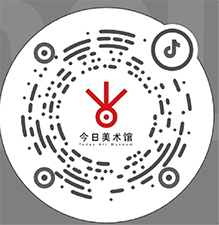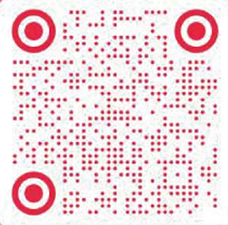Hang Fajing spent over 30 years in the exploration of ink and wash painting. He began the experiment with abstract ink and wash in the 1980s. Hang exhibited at many locations such as National Art Museum of China, Jiangsu Art Museum, and the Phoenix Center for the Arts in the United States. He is the earliest pioneer of abstract ink and wash in China.
Hang's exploration of ink and wash spans for several decades. His study and thoughts were embodied in a number of series of works in different styles: "the Struggle", "the Universe", "Image of the Book", "the Magic Cube" and so on. In 2010, Hang made the decision to step out of the ink and wash and enter a new period entitled “The Ddissipation”. This solo exhibition features the completely new accomplishments of this new period of experiments in the past five years.
Hang Faji took the five years to achieve a decisive turn and leap forward in his art with the Dissipation series. This turn and leap forward give a brand new look to his art. Just like the artist himself said, the initial motive of this conceptual turn was to "break free from the bondage of the formalism in the traditional sense." So it happened. In the production of the Dissipation series, Hang is no longer obsessed with the abstract structural relationship between the brush and the ink. Nor does he care too much about the speed of his brushstrokes or the thickness of the ink. But how could he give up the rice paper , the brush and the ink which was already part of himself? This major decision in art is a result of his thinking on life. It was as if his gaze suddenly broke away from the rice paper laid on the desk in front of him and turned on himself. He began to reflect on the times worn off on one and another pieces of such rice paper in his whole life, recalling the hardly traceable moments he experienced, the small glories that stirred such excitement, the gone youthful days and the hopes and expectation for the future. Everything was consumed by these pieces of paper. Where is the meaning of the illusory images he worked hard to create in this piece of paper, year after year? The impulse of dissipating all these arose. He found all the newspapers and catalogues that bear his works and began an experiment he never did before: he tore them, cut them with knife or scissors in an almost violent way, and then re-arrange the fragments, glued them together and framed them to form a collage picture. As he deconstructed the texts which bore the meanings of his life by tearing them into slices and re-arranging them and gluing them together on a canvas, he felt like suddenly entering an "infinite space", a space filled with social and historical "liveliness". "My mind was like a poorly lit room have several bright windows dug in the walls all of a sudden. It was such feeling of freedom and ease as my art enters the contemporary context and thinking." Thus began his repetitive labor day after day. It was like a meditation which quiets him down and let him savor every details in his life, contemplate on every beam of light and beauty that shone in his life, and feel the endless thoughts arising from every beat of the heart...
As his collection of texts expanded, Hang's dissipation began to include other people. At the Panjiayuan curiosity market he bought a complete collection of the diaries belonging to a veteran to the Korean War, who just passed away in his 90s. These diaries opens the window to a whole new line of footpath of one man in almost a century's time. The diaries in different sizes and forms bear the life codes of a man. They are the entire prints a man left to his life. How many secrets would lie in these words meant for the author's eyes only! As the author passed away, the code book of his life also lost its meaning. These diaries were sold by the veteran's family as useless things. It means that the texts were abandoned. We may imagine that a text recording a man's entire life is being torn apart, dissipated one page after another. This is a major event that matters a lot to the soul! If this would not be touching because it relates to just a stranger, then what would be the pathetic sentiments for Hang as he dissipated the texts he created for himself then? The sentiment could not be better symbolized than in the scene where the young lady Daiyu buried the fallen flower petals in a Dream of the Red Mansion.
But the most irresistible excitement lies furthermore in that Hang builds his new form of art in the exact sorrow of deconstructing life. The dissipation of the texts related to life is tragic, but no tragedy, since the aim of the dissipation is to construct. It is in the sense of constructing a new art that Hang's dissipation of the texts of life differs from the pessimistic sighs of life embodied in the flower burial by Daiyu. The dissipation here helps to find a functioning channel to build up a new form of art. In this sense, dissipation is only a means in his artistic construction.
We can see that the artist's method of dissipation not only conveys very strong will of conceptual expression, Hang also brings the abstract expression to a new level of more connotations, and thereby liberalizing abstract art from the sheer formal exploration. The Dissipation series is enough to prove that abstract works are completely possible to contain rich historical, social and humanity connotations. This is where the true meaningfulness and value of the Dissipation Series by Hang Faji are embodied.
Parallel to the Dissipation series, Hang also displays at this exhibition the dissipated "copies" as an installation work. The diaries of the veteran are completely preserved in copies. They are deconstructed yet not dispelled in form. If you are interested, you may actually walk into the life of this respectable old soldier with the guide of these readable texts. Here, dissipation as a process of constructing art demonstrates in full its symbolic significance.
At the Locust Garden in northern Beijing,12 August 2015











